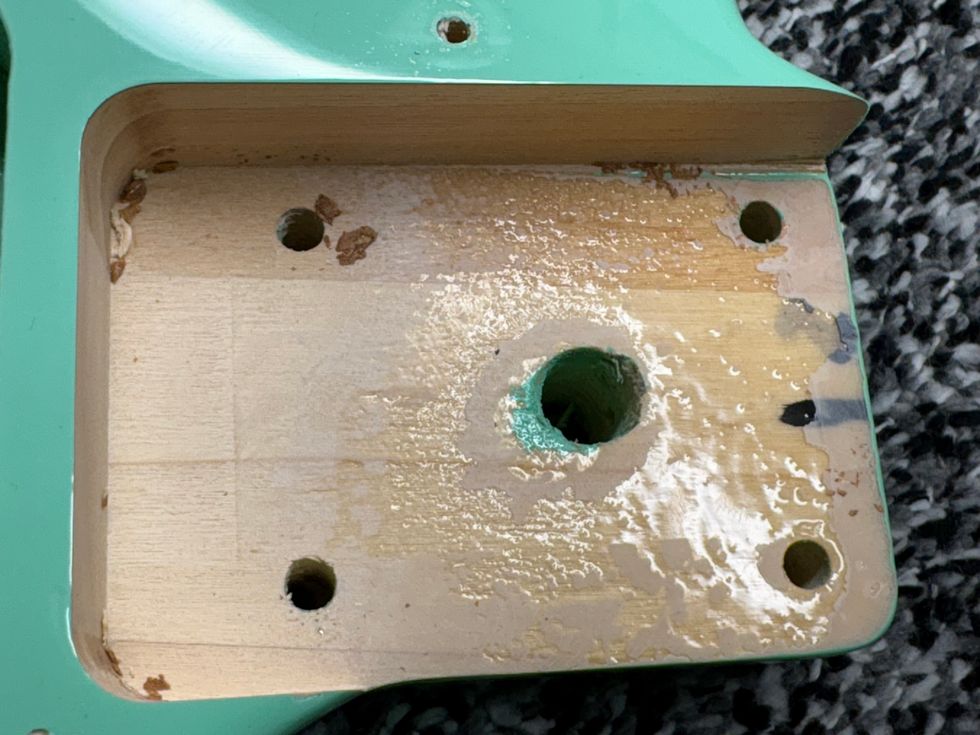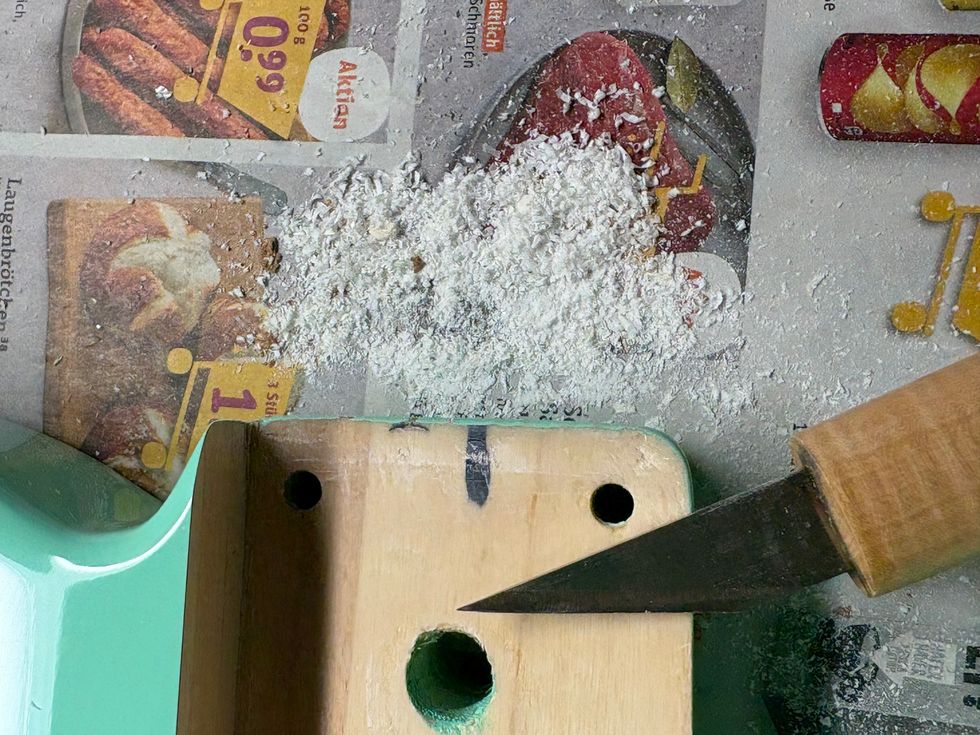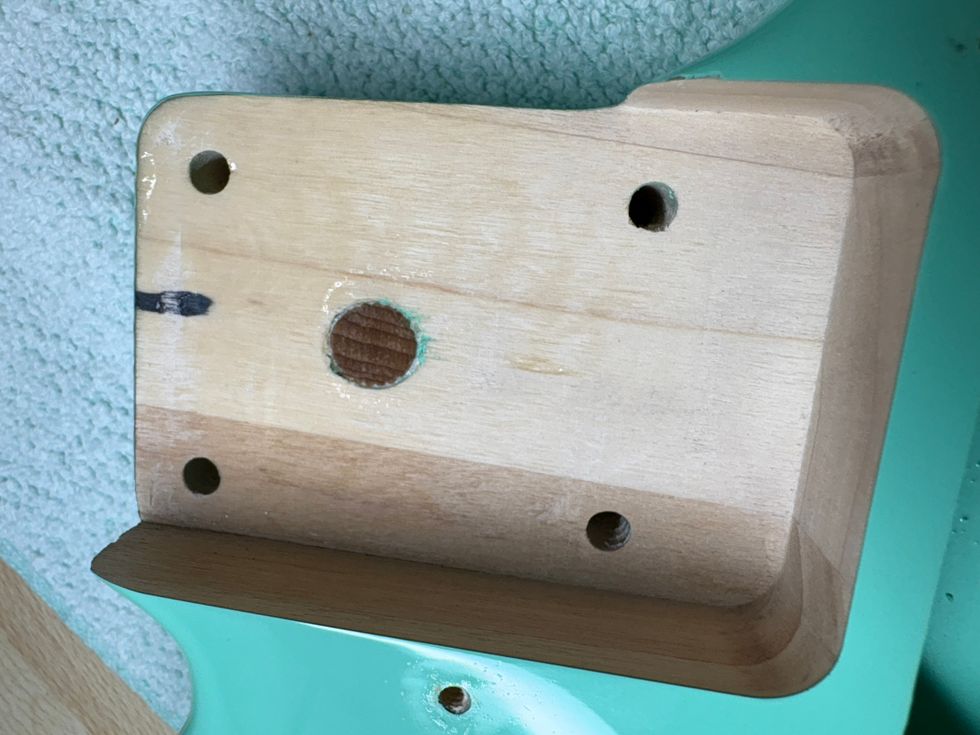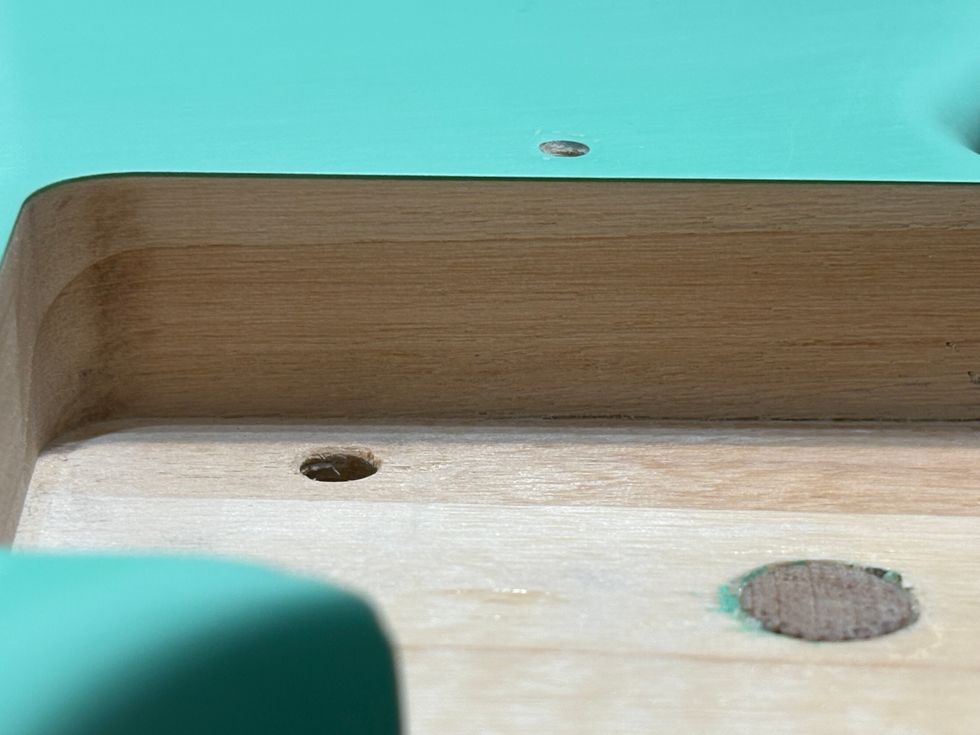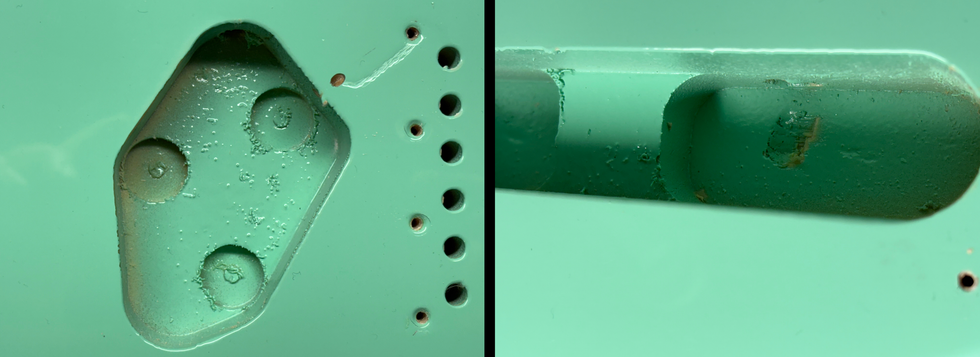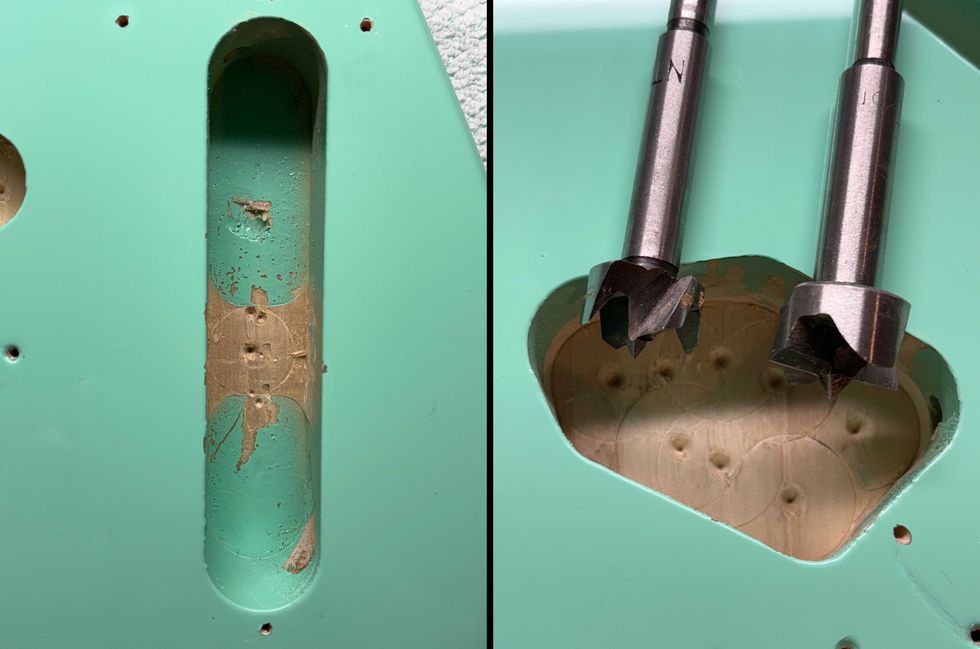Hello again! I hope you were able to find some time since last month's column to play around with different tone caps and carefully listen to what they do to your tone. Hopefully you found the perfect one for your favorite axe. Since we've been talking about the nuts and bolts inside guitars, it's now time to talk about the wires and wiring. This is another underrated subject; a weak wiring can definitely ruin your tone. On the other hand, the right cable and wiring can be an excellent tone-shaping factor for fine-tuning your sound – good wiring can be the difference between good and excellent tone!
Many guitars these days have lousy wiring and cheap parts, with crappy soldering, weak cables and ultra-cheap pots. This affects your sound and the reliability of your guitar in a very negative way, so it's worth the time to take care of it.
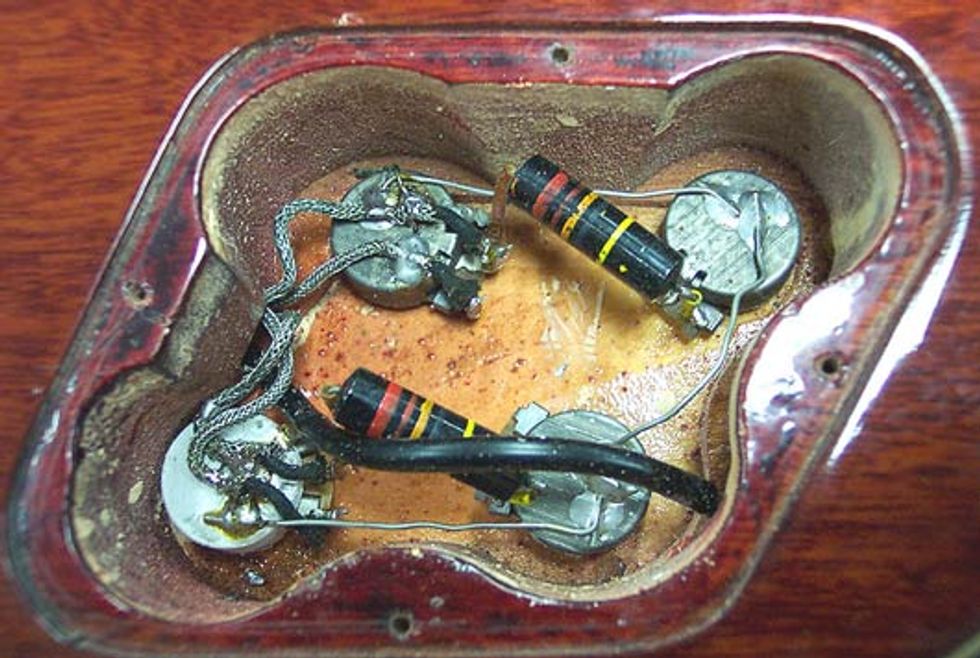 The electronics inside of a Les Paul |
The first step is to investigate your existing wiring and make a drawing of it. Then, desolder all of the bad wires and throw them away. If you want to replace components like the output jack, posts, pickup selector switch, or anything else, this is a good time to do it. While you are in there, you can also replace the caps from the tone control and do whatever other mods you want to.
After installing whatever new hardware you decide to replace, simply rewire everything point-to-point with new high-quality wire, and you're done. Take care of the soldering spots for a good connection. Don't forget the ground connections from pot to pot and coming from a Strat's tremolo or from underneath a Tele's bridge construction. Your guitar will thank you with enhanced reliability and a more open, breathing tone.
Now let's talk a little about cables in general – how to separate a good one from a bad one, and how to separate urban legends from reality. Back in the good old days, Fender and Gibson used whatever was available. Fender especially was notorious for buying large quantities of everything cheap; the resulting tones are still the benchmark for a lot of players today, and the wiring is one of the key components.
Cables can be divided into two categories: instrument cables and speaker cables. The wiring inside our guitars is not really an instrument cable, but two basic rules from instrument cables also apply to guitar wiring.
Instrument cables operate in a high-impedance, small-signal environment, which simply means that they are feeding an amplifier, or other device, with high resistance (many thousands of ohms), path to ground. Furthermore, they carry a tiny current that is measured in thousandths of an ampere, and at a very small voltage. Also, because they are most often connected to a device that has a fairly high output impedance, such as an electric guitar, cords with too much built-in capacitance will bleed off high frequencies badly, especially over long runs.
But what about losing signal volume in the wire? Remember, we said that these cords are feeding a high resistance; even the cheapest, crummiest, tiny-gauge copper wire you can find is only going to add a few ohms of resistance over a run of 100 feet or less. In practical terms, there is no difference between a few ohms of resistance and zero resistance when you are feeding an amplifier with an input impedance that is many thousands of ohms. But that extra-cheap wire is going to be unsuitable for other reasons – it will probably have very high capacitance, bleeding off your high frequencies to ground.
Now let''s consider speaker cables. Speaker cables operate in an environment that is exactly the opposite of that for instrument cables. Speaker cables connect the low-impedance output of an amplifier with the low-impedance of loudspeakers. Furthermore, they carry a relatively high current and voltage, so these cables are very intolerant of high resistances.
But what about capacitance? Capacitance is not critical in this low impedance circuit, and even a fairly significant capacitance will still have an impedance that is outrageously high compared to the output impedance of the amplifier, and thus will have little impact on the high frequencies.
A lot of expensive myths are the result of applying the critical attributes of speaker cables to instrument cords, or vice versa. For example, it's critical that speaker wires have low resistance – and resistance decreases as wire diameter increases – so large gauge wire is good for speaker wires. Unfortunately, many musicians then apply the same “bigger must be better" logic to instrument cords. That''s an expensive misunderstanding of what makes a good instrument cord!
Keeping this in mind, we can state three basic rules for a good, suitable wire to use inside guitars:
1. The wire should have as low capacitance as possible
2. The gauge is not important, and a huge gauge does not mean better tone
3. The wire should be easy to route inside the guitar
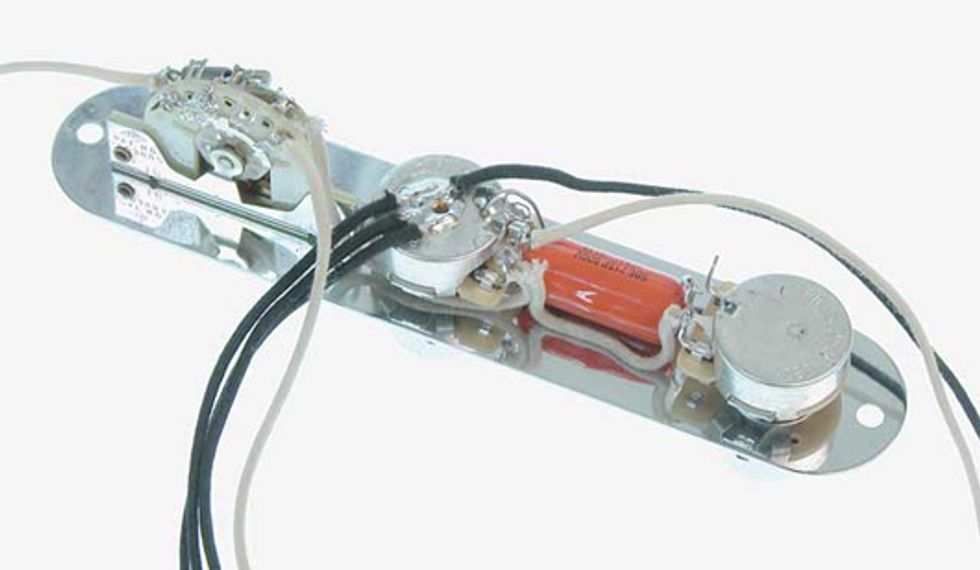 Telecaster electronics and wiring |
There are several sources to find the best wire, from the big companies like Mouser, to your local electronic store. You can also search specialized guitar shops – most of them will have a good standard wire.
In regard to tone shaping, there are two cables I would like to talk about a bit:
Reissue vintage “cloth" or “braided" wire
This cable is very similar to the original waxed cotton insulated wire that Fender and Gibson used back in the golden days. The waxed cotton insulated wire is referred to as the “cloth" wire, while the “braided" wire that Gibson used offers a braided tinned copper shield and a tinned stranded 22-gauge copper single ''hot'' conductor. The braided wire is often used for the restoration or modification of Gibson guitars.
The vintage cloth wire is a cotton-covered 22-gauge wire, American-made by the same company that made it for Fender in the old days. It is perfect for restoration of older guitars and amps, or for retro clone projects. It is waxed just like the old stuff, and is a pleasure to work with; just cut to length and push back the cotton braid. The lack of plastic insulation resonances results in the good, natural sound from this 22-gauge, tinned stranded, high quality copper wire, so it's always worth a try. If you are looking for the vintage tone, I highly recommend trying this wire – it really makes a difference in tone. Sometimes you can even find this wire as NOS.
Teflon insulated silver wire
Usually, this is a very fine stranded wire with upwards of 20+ individual pure silver cores and is often used in the hi-fi world. The Teflon insulation is perfect for a soldering job – your soldering iron never can get hot enough to burn or melt the insulation. The cable is easy to route and offers a very transparent, natural, punchy tone. Compared to a standard wire, the signal is slightly louder, and the separation of the individual strings is enhanced. I like to describe the effect as a natural pickup sound. The clarity such a cable can have is stunning, and together with good pure nickel strings, you will hear things from your guitar that you've never heard before. Sure, this cable, especially the high-grade, military-graded version, is not cheap, but it's worth a try in your axes if you are looking for the most transparent, natural, open sound.
In closing, I would like to talk a little bit about shielded cables inside guitars. You can use shielded cables for all connections inside your axes, and, under some very special circumstances, this can make sense. But to be honest, I don't have a single guitar with any shielded cable runs and I've never had a problem. Take a look inside any vintage Les Paul, Strat or Telecaster – you will not find any shielded cables there! A good compromise is to use a shielded cable run to connect the output jack, especially in a semi-acoustic guitar. Normally this is the longest cable run inside a guitar, so it's most susceptible to picking up hum or noise. All of the other connections are really short, so there is almost no chance that they will pick up any hum or noise.
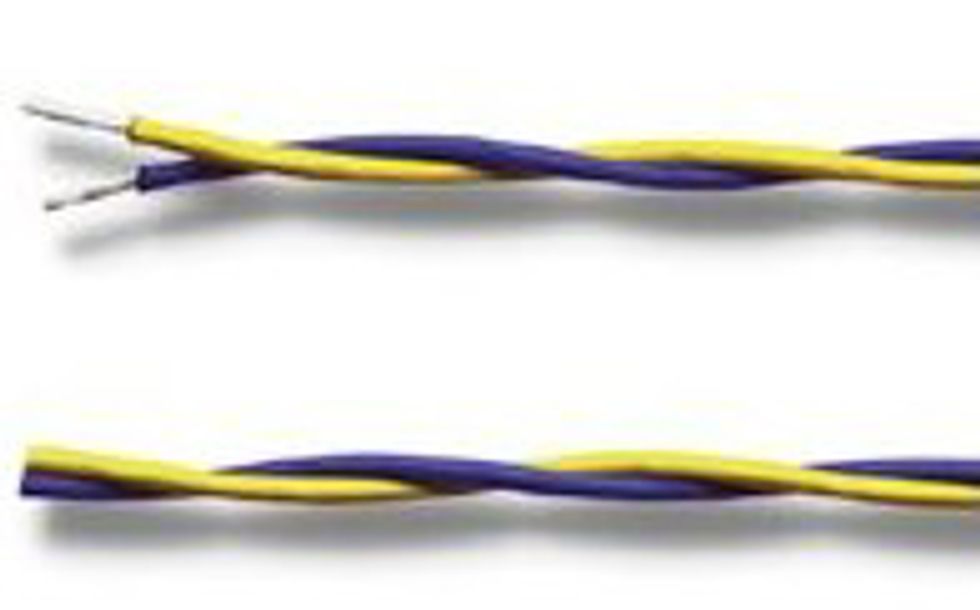
This will provide extra shielding, and will work as well as any standard shielded cable. You can also use this neat little trick inside amps and for any cable run inside a guitar. As an added bonus, you can do this to the connection cables of any Strat or Telecaster pickup to fine-tune the tone and provide some extra shielding to singlecoil pickups. I will spare you the explanation of the physical details of this trick, but the difference in sound is easy to hear, and you may or may not like it. This is a wide field to experiment in, so play around with it.
Hope to see you all next month, and have fun trying some different wires inside your guitars!
Dirk Wacker has been addicted to all kinds of guitars since the age of five and is fascinated by anything that has something to do with old Fender guitars and amps. He hates short scales and Telecaster neck pickups, but loves twang. In his spare time he plays country, rockabilly, surf and Nashville styles in several bands, works as a studio musician and writes for several guitar mags. He is also a hardcore DIY guy for guitars, amps and stompboxes and also runs an extensive webpage singlecoil.com about these things.














![Rig Rundown: Russian Circles’ Mike Sullivan [2025]](https://www.premierguitar.com/media-library/youtube.jpg?id=62303631&width=1245&height=700&quality=70&coordinates=0%2C0%2C0%2C0)




